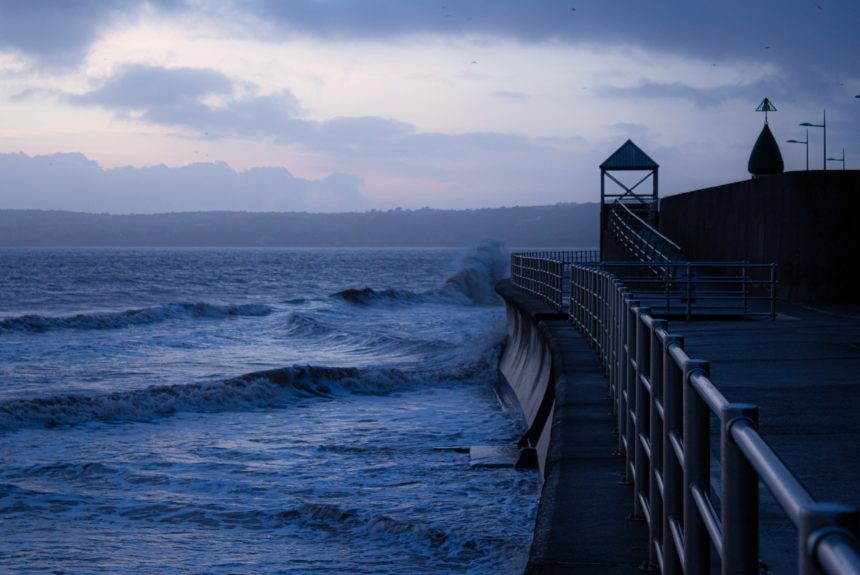When people discuss the negative effects of climate change, rising sea levels are often at the forefront of the conversation. Global sea levels have risen more than 8 inches since 1870 and the rate at which sea levels are rising has accelerated. According to the Intergovernmental Panel on Climate Change’s 6th Assessment report, human influence was very likely the primary driver over the past 50 years.
While long-term global mitigation will help slow the rate of sea level rise, we can also adapt to rising sea levels through investments in coastal resiliency, natural infrastructure, and other adaptation efforts.
Fact vs. Myth
- Fact: Scientists have high confidence that global sea levels are rising at an accelerated rate.
- The average rate of sea level rise from 1901 to 1971 was 1.3 mm (0.05 in.) per year, increasing to 1.9 mm (0.07 in.) per year from 1971 to 2006 and then 3.7 mm (0.15 in.) per year from 2006 to 2018.
- Myth: We are unsure of how human activity impacts sea level rise.
- The Intergovernmental Panel on Climate Change (IPCC) states in its Sixth Assessment Report that we are “virtually certain that human-caused CO2 emissions are the main driver of current global acidification of the surface open ocean.”
- Fact: U.S. coastlines produce $9.5 trillion in goods and services each year and are vital to national security.
- Given the economic importance of this area, investing in coastal adaptation efforts is important.
The potential risks associated with rising sea levels
- Rising sea levels have the potential to be very expensive
- Estimates vary, but one report published in Nature estimates that coastal flooding in Europe will cost anywhere from $36 billion to $1 trillion (after inflation) by 2100 if no adaptation or mitigation measures are taken.
- In the United States, we have seen increased flooding from climate-related impacts. Because of poor policies, FEMA’s National Flood Insurance Program is more than $20 billion in debt.
- This debt will be transferred to taxpayers and future generations.
- Rising sea levels have the potential to disrupt people’s livelihoods
- Around 40% of America’s population, or 128 million people, live in coastal counties.
- Of this population, 40% live in an elevated coastal risk category, according to the National Oceanic and Atmospheric Administration (NOAA).
- Mangrove forests, which protect communities from flooding and hurricanes, are also at risk of drowning due to increased sea level rise.
Markets vs. Mandates
- Markets are responding to and addressing to increasing sea level rises:
- Builders are constructing elevated homes near water as a response to rising sea levels and storm surges.
- The First Street Foundation is developing accurate and robust flood mapping to better assess future risk of flooding from storm surges and sea level rise.
- Flood Control America is building removable flood walls for companies.
- Startups such as Running Tide Technologies and Phykos are using kelp farming to reduce emissions.
- Nonprofits such as Coastal Resource Group are conserving wetlands and mangroves along Florida’s coastline.
- Certain government initiatives have been successful, including the Louisiana Coastal Master Plan, but government-imposed barriers remain.
- Until recently, the National Flood Insurance Program (NFIP), which is the nation’s largest flood insurance provider, did not adequately price risk in its premiums.
- This disincentivized communities and homeowners from investing in upgrades that would protect them from rising sea levels and increased flooding.
- The Federal Emergency Management Agency (FEMA), recently updated its premiums to more accurately include flood risk in its Risk Rating 2.0.
- Until recently, the National Flood Insurance Program (NFIP), which is the nation’s largest flood insurance provider, did not adequately price risk in its premiums.
How to address rising sea levels through a “no regrets” policy framework
- Invest in natural infrastructure along coastlines.
- Natural infrastructure such as floodplains, wetlands, and mangrove forests are among the most cost-effective ways to adapt to rising sea levels.
- Continue to invest in energy innovation at the federal level and empower the private sector to create the innovations that are needed to meaningfully reduce emissions.
Summary:
- Sea levels are rising at a faster rate than the historical average due, in large part, to human-induced climate change. Cost-effective global mitigation can slow the rate of sea level rise and investments in adaptive infrastructure will help protect communities.
- Sea level rises can impact communities and economies if proper adaptation measures are not taken.
- We can adapt to and mitigate rising sea levels by investing in natural infrastructure, reforming harmful government policies, and trusting in the private sector to produce the innovations that are needed to reduce emissions.


